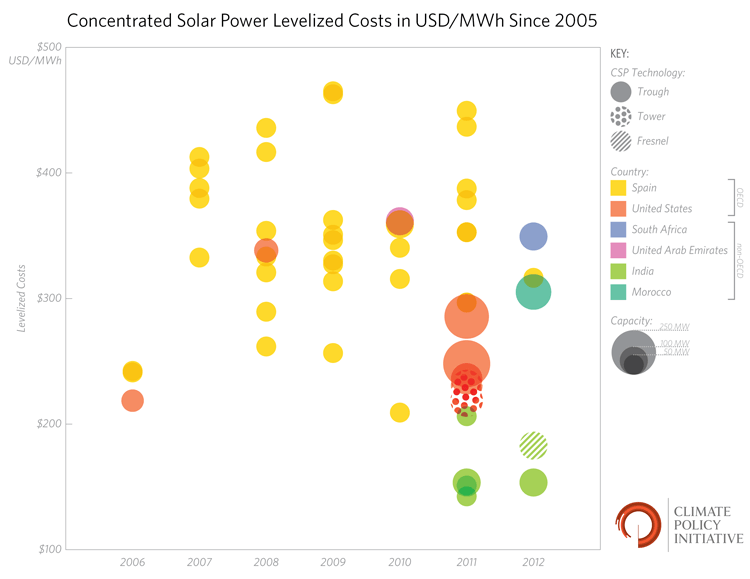In the past, renewable energy technologies have been much more expensive than their fossil fuel competitors but costs of wind and solar have come down after public support has deployed them at scale. In fact, costs of solar photovoltaic power plants have decreased roughly 20% and wind power plants 15% every time installed capacity has doubled.
For concentrated solar power (CSP), experts have projected a cost reduction of 10-15% for every doubling of capacity. However, new CPI analysis shows that CSP has not demonstrated cost reductions at the global level with increased deployment over the last five years, but it has done so in some regions for some CSP technologies.

Our analysis has also revealed that several emerging economies are becoming important new markets for CSP; competitive tenders and reverse auctioning are replacing feed-in tariffs as main policy support tool, and both concessional and commercial finance are being invested in the technology. Crucially, we also see that over 98% of the total investment in CSP to date has needed some form of public support. Intelligent policy design will therefore clearly be central to the technology’s future.
Forthcoming CPI work for the Climate Investment Funds Administrative Unit analyzes which public policy and financing tools have effectively deployed CSP at scale, while generating cost reductions for different technologies. We also address questions such as: can public policy and support drive technology cost reductions simply by enabling additional capacity, or are more specific interventions needed? Is there trade-off between deployment at scale, as achieved through feed-in tariffs, and low policy cost, as in case of reverse auctioning?
To answer these and other questions we are analyzing two CSP plants in-depth. One is Eskom’s CSP 100 MW tower with 9-12 hours of storage in Upington, South Africa, and the other is Reliance’s 100 MW linear Fresnel in Rajasthan, India. We will also examine the impact of feed-in tariff policies in Spain, and organize several dialogue meetings with key stakeholders.

